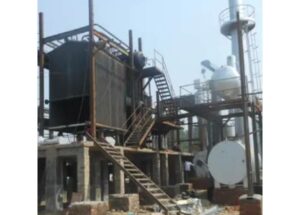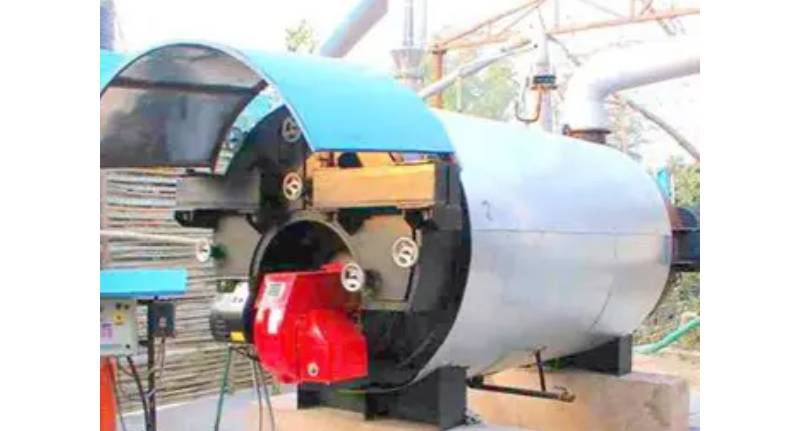How Does an Oil-Fired Steam Boiler Work? Explained
Oil-fired steam boilers are a cornerstone in industries and homes requiring efficient and reliable heating systems. These boilers convert fuel oil into heat and steam, providing a consistent source of warmth and energy for various applications. If you’re curious about how these systems operate, this article will break down their components, operations, and advantages.
Understanding the Basics of Oil-Fired Steam Boilers
An oil fired steam boiler is a heating system that uses oil as its fuel to generate steam. Steam is often used for heating, sterilization, power generation, and industrial processes. Here is how it works in a nutshell:
Fuel Combustion: The boiler burns oil to produce heat.
Water Heating: Heat from the combustion process is transferred to water inside the boiler.
Steam Generation: As the water heats, it turns into steam.
Steam Distribution: The steam is distributed through pipes for various uses.

Key Components of an Oil-Fired Steam Boiler
To understand the operation of an oil-fired steam boiler, it helps to know the major components:
-
Burner
-
- The burner is the heart of the boiler. It’s where the fuel oil is mixed with air and ignited to create a controlled flame. Modern burners are designed to ensure efficient combustion, reducing emissions and fuel consumption.
-
Combustion Chamber
-
- This is the area where the burning of fuel occurs. It’s built with materials that can withstand high temperatures to ensure durability and efficiency.
-
Heat Exchanger
-
- The heat exchanger transfers the heat generated in the combustion chamber to the water. This component plays a crucial role in determining the boiler’s efficiency.
-
Water Tank and Steam Drum
-
- The water tank stores water to be heated, while the steam drum collects and holds the steam until it is needed for use.
-
Flue and Exhaust System
-
- The flue and exhaust system channel the combustion by-products, such as carbon dioxide, safely out of the building.
-
Control Systems and Safety Features
- Modern boilers come equipped with control systems for regulating temperature, pressure, and fuel usage. Safety features like pressure relief valves prevent overheating or excessive pressure buildup.
How Does the Process Work?
Here is a step-by-step explanation of how an oil-fired steam boiler operates:
Step 1: Fuel Delivery
The process begins with the delivery of fuel oil from a storage tank to the burner via a fuel pump. The pump ensures the correct amount of oil is sent to the burner.
Step 2: Combustion
The burner mixes the oil with air and ignites it to produce a high-temperature flame. This combustion process generates the heat required to heat the water.
Step 3: Heat Transfer
The heat exchanger transfers the heat from the combustion gases to the water in the boiler. The water absorbs the heat and gradually reaches its boiling point.
Step 4: Steam Formation
Once the water reaches its boiling point, it turns into steam. The steam rises to the steam drum, where it is stored and pressurized.
Step 5: Steam Distribution
The pressurized steam exits the boiler and travels through pipes to various points of use. Depending on the application, the steam might heat spaces, power turbines, or sterilize equipment.
Step 6: Exhaust
Combustion gases are expelled through the flue, ensuring safety and compliance with environmental regulations.
Applications of Oil-Fired Steam Boilers
Oil-fired steam boilers are versatile and find use in various settings:
- Industrial Applications: Used in manufacturing, food processing, and chemical production.
- Residential Heating: Provides warmth for homes in areas where natural gas is unavailable.
- Power Generation: Powers turbines to generate electricity.
- Healthcare Facilities: Sterilizes medical equipment and maintains controlled environments.
Advantages of Oil-Fired Steam Boilers
Oil-fired steam boilers offer several benefits:
-
High Efficiency
-
- Modern designs incorporate advanced burners and heat exchangers, achieving higher efficiency and reducing fuel consumption.
-
Fuel Availability
-
- Fuel oil is widely available, making it a reliable energy source for remote or off-grid locations.
-
Durability
-
- Oil-fired boilers are built to withstand harsh conditions and have a long service life with proper maintenance.
-
Rapid Heating
- These systems heat water quickly, ensuring an immediate supply of steam when needed.
Challenges and Maintenance Tips
While oil-fired steam boilers are efficient, they come with challenges:
Fuel Cost
Oil prices can fluctuate, impacting operational costs.
Maintenance Requirements
Regular maintenance is essential to ensure efficiency and longevity. Common tasks include:
- Cleaning the burner and heat exchanger.
- Checking for leaks or corrosion.
- Inspecting the flue and exhaust system.
Environmental Concerns
Combustion of fuel oil produces emissions. Modern boilers mitigate this through advanced burners and emission controls.
Comparing Oil-Fired Boilers to Other Systems
Oil vs. Gas Boilers
- Efficiency: Gas boilers are typically more efficient.
- Fuel Availability: Oil is better for remote locations where gas lines are absent.
Oil vs. Electric Boilers
- Cost: Oil boilers have lower operational costs in regions with high electricity rates.
- Output: Oil boilers provide higher heating output, suitable for industrial needs.
Future Trends in Oil-Fired Boiler Technology
The industry is evolving to address environmental concerns and efficiency demands. Emerging trends include:
- Hybrid Systems: Combining oil boilers with renewable energy sources like solar panels.
- Advanced Automation: Smart controls for optimizing fuel usage and reducing waste.
- Low-Emission Burners: Reducing the environmental impact of oil combustion.
Conclusion
Oil-fired steam boilers remain a reliable and efficient solution for various heating and industrial needs. Understanding their components and operations can help users optimize performance and make informed decisions. With proper maintenance and awareness of emerging technologies, these systems can continue to provide effective and sustainable solutions for years to come.




